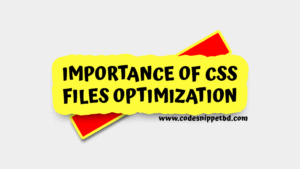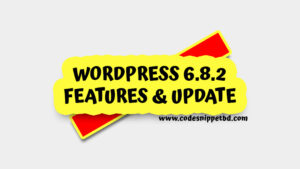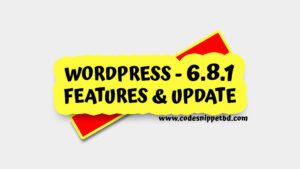Email spoofing and phishing attacks are major threats in the digital world. One of the most effective tools to fight these problems is DMARC—short for Domain-based Message Authentication, Reporting & Conformance.
DMARC helps domain owners protect their brand and recipients by ensuring only authorized senders can use their domain. In this article, we’ll explain DMARC in a beginner-friendly way, its benefits, how to set it up, and how it works with SPF and DKIM.
What is DMARC?
DMARC is an email authentication protocol that builds on two existing mechanisms—SPF (Sender Policy Framework) and DKIM (DomainKeys Identified Mail). It helps you:
- Verify that emails sent from your domain are authentic.
- Block fake emails from reaching your customers.
- Get reports about who is sending emails on your behalf.
In Simple Terms:
DMARC is like a security guard for your email domain. It tells email servers:
- How to handle emails that fail SPF or DKIM checks.
- Where to send reports of suspicious emails.
Why DMARC Matters
- Protects Your Brand
DMARC prevents hackers from using your domain to send phishing emails. - Improves Email Deliverability
Your emails are less likely to go to spam if they pass DMARC. - Offers Transparency
You receive daily reports showing who is sending emails from your domain. - Supports Compliance
Many industries require proper email authentication for data protection.
How DMARC Works
DMARC checks two things:
- Does the email pass SPF or DKIM?
- Does the “From” address match the domain in the SPF or DKIM?
If both conditions are met (or at least one depending on the DMARC policy), the email is accepted. If not, the receiving server follows the instructions in your DMARC policy.
DMARC Policy Options:
- none – Just monitor; no action taken.
- quarantine – Send suspicious emails to spam.
- reject – Block emails that fail authentication.
Sample DMARC Record
A DMARC record is added to your domain’s DNS as a TXT record.
Example:
_dmarc.example.com. IN TXT "v=DMARC1; p=quarantine; rua=mailto:dmarc@example.com; ruf=mailto:forensics@example.com; fo=1"Record Breakdown:
- v=DMARC1 – Protocol version
- p=quarantine – Policy for failed emails (none/quarantine/reject)
- rua – Aggregate report email
- ruf – Forensic report email
- fo=1 – Send report on any failure
How to Set Up DMARC for Your Domain
Step 1: Make Sure SPF and DKIM Are Set Up
DMARC relies on these two protocols. If they’re not configured, do that first.
Step 2: Create a DMARC TXT Record
Use a generator like dmarcian.com or mxtoolbox.com to create a DMARC record.
Step 3: Add the TXT Record to Your DNS
Go to your domain registrar (like GoDaddy, Namecheap, Cloudflare) and add the record under:
- Name/Host: _dmarc
- Type: TXT
- Value: Your generated DMARC policy
Step 4: Monitor Reports
Start with p=none to collect data without affecting email flow. Review the reports to identify legitimate and suspicious sources.
DMARC with Gmail, Outlook, and Other Services
| Email Service | DMARC Support | Setup Notes |
|---|---|---|
| Google Workspace | ✅ | Use Admin Console to turn on DKIM; DMARC via DNS |
| Microsoft 365 | ✅ | Add SPF, DKIM, and DMARC in DNS manually |
| Zoho Mail | ✅ | Offers easy tools to set up SPF, DKIM, and DMARC |
| cPanel Webmail | ✅ | Use the Email Deliverability section in cPanel |
DMARC Monitoring Tools
To analyze DMARC reports, you can use:
- Google Postmaster Tools
- dmarcian
- EasyDMARC
- Postmark
- MxToolbox
These tools help you visualize who is using your domain and if any unauthorized servers are trying to send mail.
Common Mistakes to Avoid
| Mistake | Solution |
|---|---|
| Not having SPF or DKIM | Set both before enabling DMARC |
Using p=reject immediately | Start with p=none for testing |
| Ignoring reports | Regularly review DMARC data |
| Typos in DNS records | Always double-check formatting |
Does DMARC Help With SEO?
Not directly—but it protects your sender reputation, which means:
- Your outreach emails won’t land in spam
- Your domain won’t get blacklisted
- You build trust with subscribers and customers
In short, it’s indirectly helpful for SEO by keeping your communication clean and effective.
DMARC (Domain-based Message Authentication, Reporting & Conformance) is a critical tool in today’s email ecosystem. It works with SPF and DKIM to stop unauthorized use of your domain and gives you valuable insight into your domain’s email activity.
If you’re serious about protecting your brand and improving email deliverability, setting up DMARC is not optional—it’s essential.
Start with a p=none policy to monitor traffic, then gradually move to quarantine or reject once you’re confident about your legitimate sources. And always monitor the reports you receive to stay ahead of attackers.









